
Sacred Places are sites related to our relationship with a spiritual being.
People from all around the world travel to Padua in Veneto, Northern Italy to visit the Basilica of “San Antonio di Padova.”
The Basilica of Saint Anthony of Padova is a Roman Catholic Church and minor basilica. It is a “Basilica” which is an honorary title that is given to a Church for its significance as in this case, an international place of worship, a sacred place. It is truly an impressive place, one of the best I have ever seen.
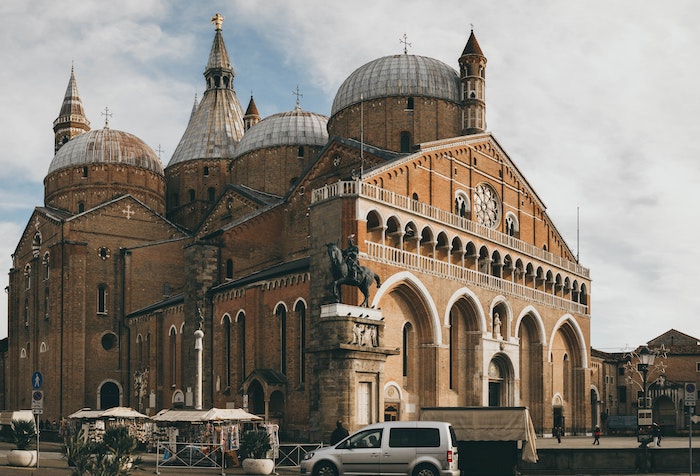
The Basilica has different styles of construction that changed throughout time such as Gothic, Romanesque, and Byzantine styles. It is enormous, it has eight domes, two twin bell towers, and two miniature minarets. It occupies an area that is 115 meters long, 55 meters wide, and has a height of 38.5 meters.
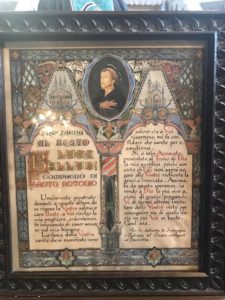
The Basilica has been dedicated in honor of Saint Anthony and the site is a very well-known place of pilgrimage for Catholics. It has beautiful paintings and statues with ornate decor.
Saint Anthony was a Franciscan born in 1192 in Portugal and died in 1231 in India. When he was 15 years old he decided to dedicate his life to God. He was well known as a man of prayer and sacrifice. He gave up a wealthy family to dedicate his life to Christ, and he was known for his great devotion to the sick and the poor,
He was first a Dominican friar and later on joined the Franciscan order. He was the first friar to teach Theology to other friars.
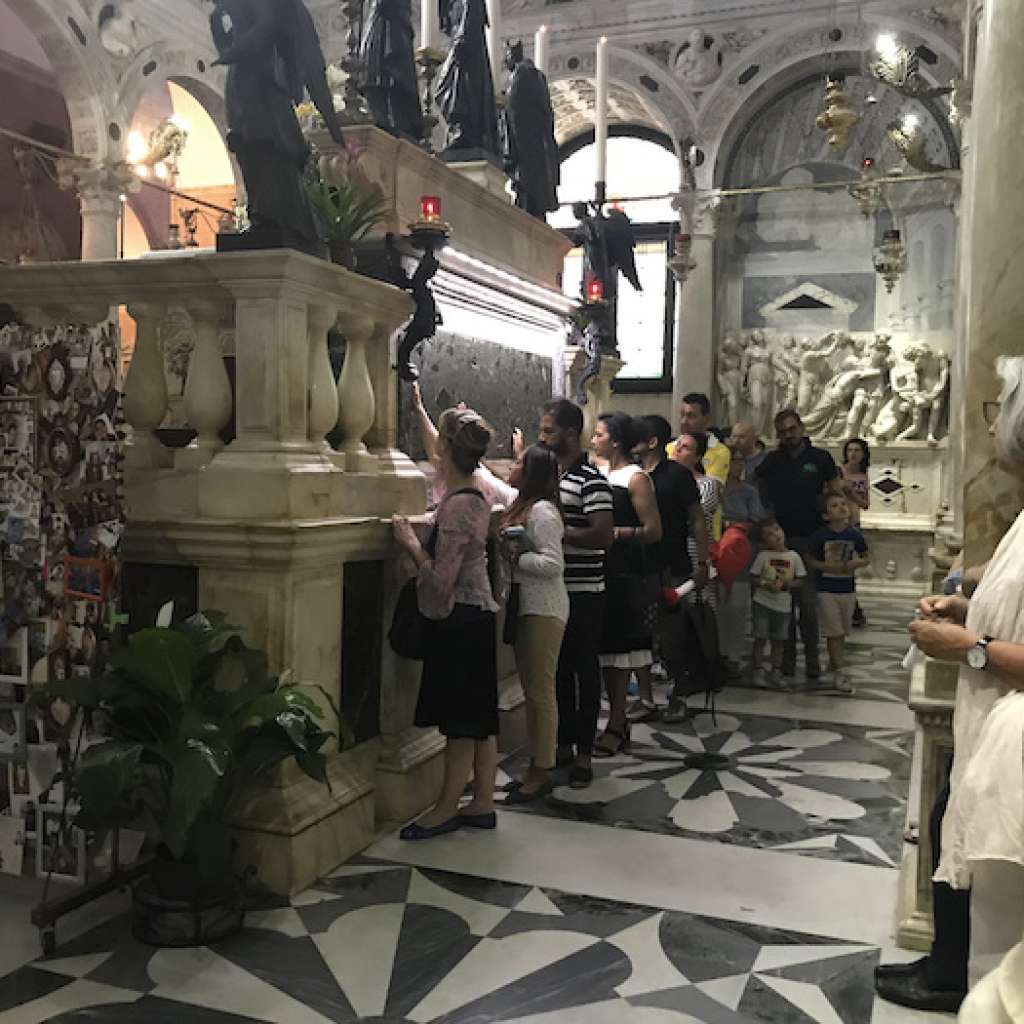
The Chapel of the Saint and his Tomb is very impressive and touching. There is a big wall with prayers, petitions, and thank you plaques.
St. Anthony died before achieving his goal of preaching to the Moors in Morocco. He is buried at the Basilica and pilgrims wait in line to touch his tomb.
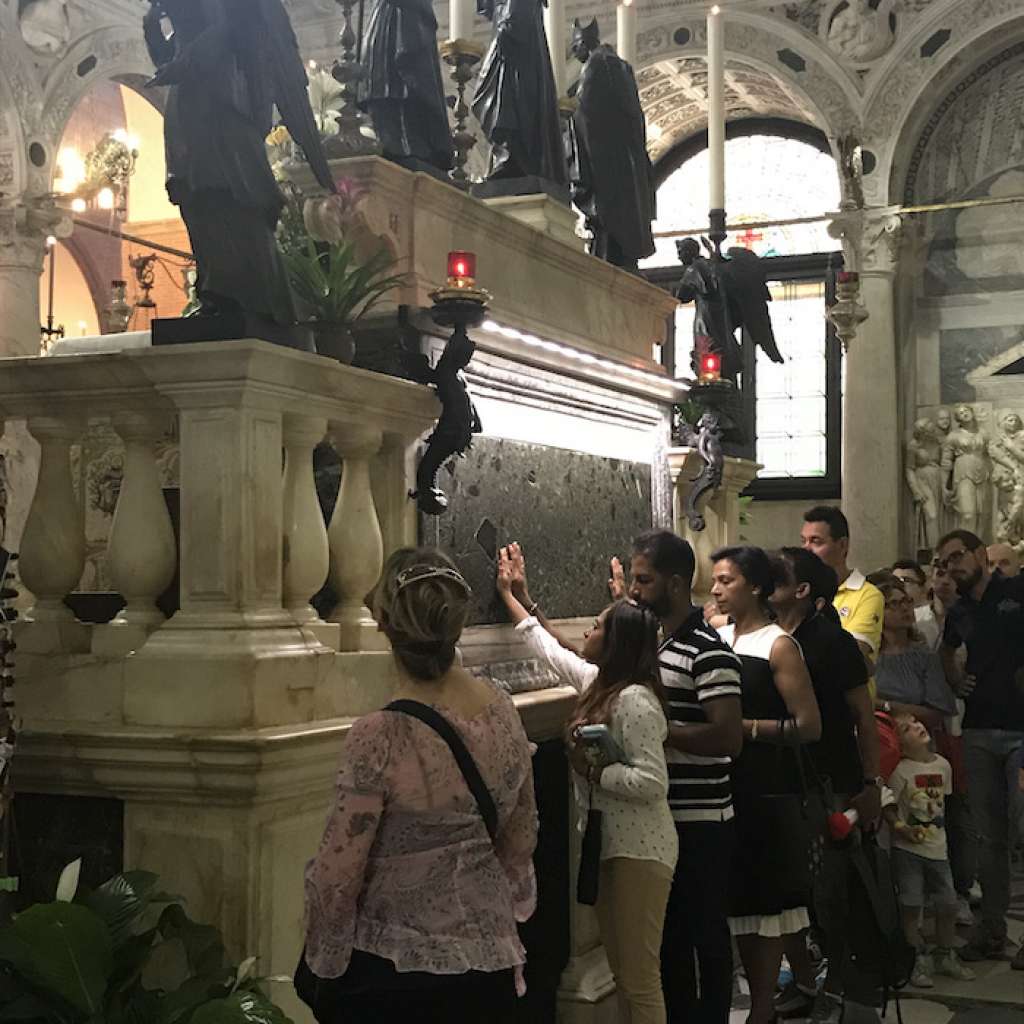
He was very popular for his mastery of preaching and the many miracles that are attributed to him. He was known to be in two places at the same time at once and by the miraculous appearance of Baby Jesus in his home.
HE IS THE PATRON SAINT OF LOST THINGS! Just in case:-)
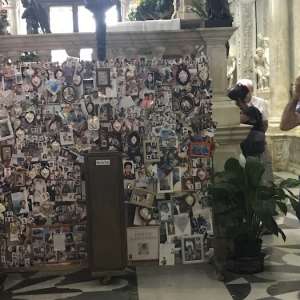
After his death, many claimed St.Anthony performed miracles on their behalf, and there is an account of miracles still happening to this date.
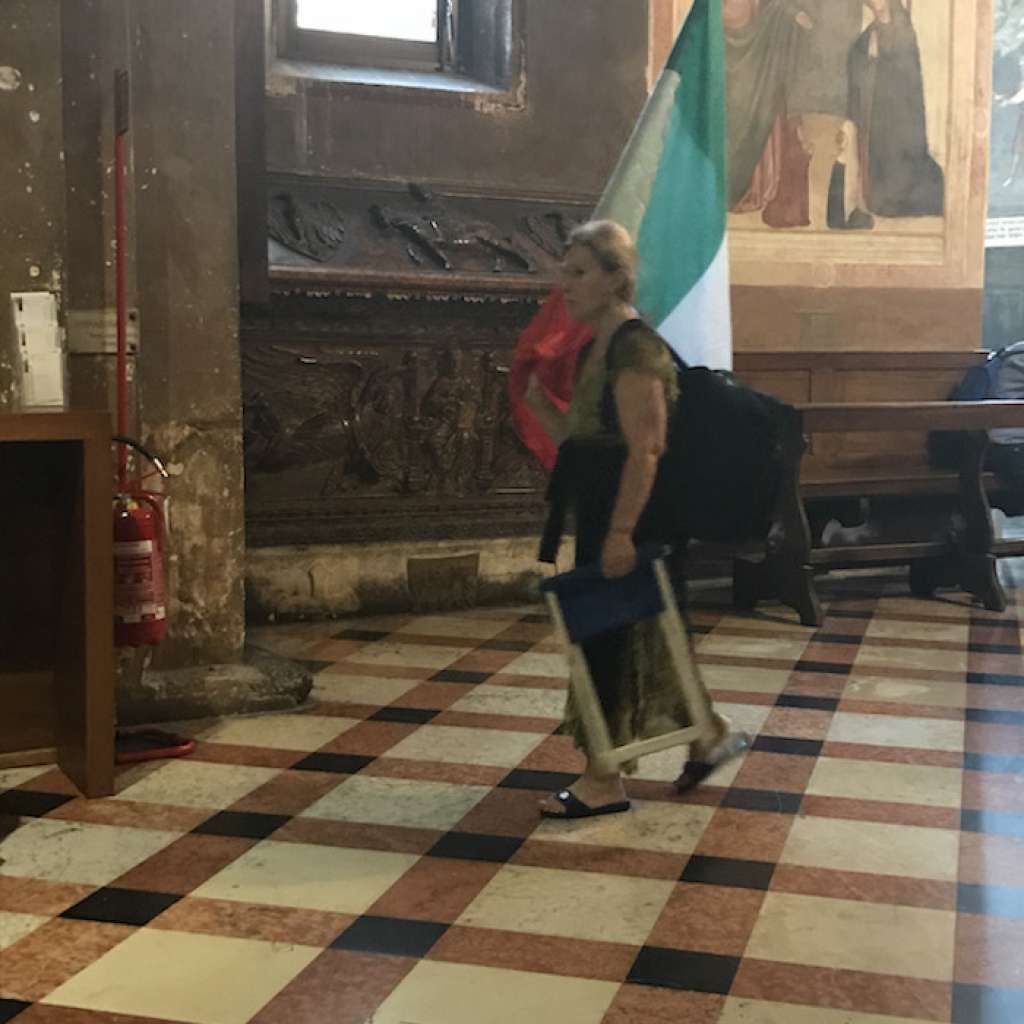
Devotees do pilgrimages to the Basilica and many stay in contemplation/meditation at the site for hours.
There is a treasury chapel where one can find Relics)of St. Anthony, for non-Catholics, the relics are the mortal remains of saints.
More about the Saint’s Relics below
There is a display of the chin and tongue of St. Anthony in a reliquary. I saw it, yikes!

Did you know that Catholics and Buddhists believe in the veneration of relics??
If you are too sensitive to the subject of death and dying, please stop reading here. Otherwise, let me tell you why the relic of St. Anthony’s tongue is here. He died of edema in 1231 and he was exhumed years after his death. When he was exhumed, curiously his body and his jaw were intact and the rest of his body decomposed (yikes!). Nonetheless, reliquaries were made with these “body parts” and people can “enjoy” seeing them. Catholics believe to feel closer to the saint by viewing the reliquaries and when they are allowed even touch them, they represent miracles of faith. (I am also a bit Catholic so I do touch the reliquaries when I am allowed to do so:-)))
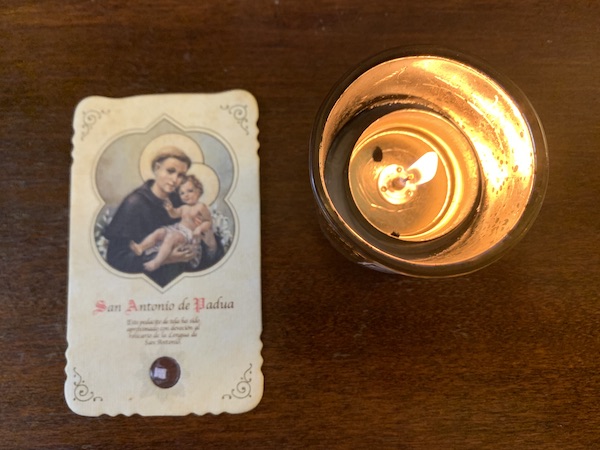
The image of St Anthony holding Baby Jesus was purchased at the Basilica. The shop located at the Basilica sells stamps in all different languages. This particular stamp has a “relic” which is a piece of cloth (tiny) that was put close to St. Anthony’s Tongue and put inside the stamp.





